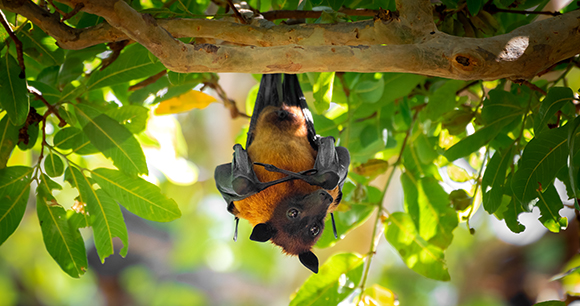Study Examines Pandemic Potential of Climate Change
COVID-19—the most recent example of a zoonotic pathogen causing a global pandemic—continues to claim human lives, even as vaccines and other strategies return us to some semblance of normalcy. However, as many as 10,000 other viruses silently circulate among wild mammals, according to estimates, and some will spill over to humans, triggering future pandemics. A recent analysis published in Nature (Carlson et al., 2022) indicates that how and when that happens will be profoundly affected by the changes we effect on the Earth and its climate.

Carlson and colleagues assessed the impact of climate and land-use change on virus sharing among mammals and the potential for a zoonotic spillover event into humans. Based on predicted range shifts for 3,139 mammal species in response to projected climate and land-use change scenarios for 2070, the authors determined there will be approximately 4,000 novel opportunities for virus transmission among wildlife species who were previously geographically isolated, potentially leading to new zoonotic spillover events. With bats accounting for the majority of virus-sharing events and the most likely vector for virus emergence in humans, these opportunities are more likely in high-elevation habitat, biodiversity hotspots, and high-density human populations in Asia and Africa.
The study authors found that climate and land-use changes are already creating novel opportunities for virus sharing and, further, that holding warming to 2⁰C (3.6⁰F) over the pre-industrial average (the upper limit goal of the Paris Agreement) will not be sufficient to reduce future viral sharing. What’s more, the authors’ simulations, which only involved mammals, likely underestimate the risk of novel virus sharing. Other taxa, particularly birds, could escalate the potential for the cascading impacts of climate and land-use change to hasten arrival of the next pandemic.
These findings reemphasize the need for a global wildlife surveillance system to monitor wildlife health, track climate change–induced range shifts, protect wildlife habitat, and minimize our exploitation of wildlife and habitat to reduce our own risk of exposure to dangerous novel pathogens.
Program Terms: Terrestrial Wildlife
AWI Quarterly Terms: Quick Read
Related News
IUCN Reaffirms Long-Tailed Macaques’ Endangered Status Despite Industry Pressure
In Program: Terrestrial WildlifeThe International Union for Conservation of Nature (IUCN) today released an update to its Red List of Threatened Species. The update revealed that the long-tailed...
AWI Funds Research to Alleviate Human-Wildlife Conflicts, Animal Suffering
In Program: Terrestrial WildlifeThe Animal Welfare Institute (AWI) announced today the eight recipients of its Christine Stevens Wildlife Award who are developing humane solutions to human-wildlife conflicts and...
Refuge from Cruel Trapping Act Reintroduced to Protect Wildlife and Pets on Public Lands
In Program: Companion Animals, Terrestrial WildlifeThe Animal Welfare Institute (AWI) endorses the Refuge from Cruel Trapping Act, reintroduced today in the US House of Representatives by Rep. Jerrold Nadler (D-NY)....
Colorado Now Leads Country in Comprehensive Approach to Fighting Wildlife Trafficking
In Program: Terrestrial WildlifeToday, Colorado Gov. Jared Polis signed S.B. 25-168 into law to combat wildlife trafficking. The bipartisan legislation, which is unique among states for the number...